An Acoustic Sensor for Combined Sewer Overflow (CSO) Screen Condition Monitoring in a Drainage Infrastructure
Abstract
:1. Introduction
2. Materials and Methods
2.1. System Architecture and Design Methodology
2.2. Field Trials
3. Results
3.1. Phase 1 Short-Term Experiments and Results
3.2. Phase 2 Longer Term Experiments and Results
4. Conclusions
Author Contributions
Funding
Institutional Review Board Statement
Informed Consent Statement
Data Availability Statement
Conflicts of Interest
References
- Waste Water Treatment in the United Kingdom—2012. Available online: https://assets.publishing.service.gov.uk/government/uploads/system/uploads/attachment_data/file/69592/pb13811-waste-water-2012.pdf (accessed on 10 January 2020).
- OFWAT. Service Delivery Report 2018–2019. 2019. Available online: https://www.ofwat.gov.uk/wp-content/uploads/2019/01/Service-Delivery-Report-20190110-Final.pdf (accessed on 10 January 2020).
- Water UK. Water Companies Reveal Additional £8 Billion Investment with Bills Kept Down Again. 2019. Available online: https://www.water.org.uk/news-item/water-companies-reveal-additional-8-billion-investment-with-bills-kept-down-again/ (accessed on 10 January 2020).
- Wang, S.; Garcia, J.L.C.; Davidson, J.; Nichols, A. Conductance-Based Interface Detection for Multi-Phase Pipe Flow. Sensors 2020, 20, 5854. [Google Scholar] [CrossRef] [PubMed]
- Alejo, D.; Caballero, F.; Merino, L. A Robust Localization System for Inspection Robots in Sewer Networks. Sensors 2019, 19, 4946. [Google Scholar] [CrossRef] [PubMed] [Green Version]
- Thiyagarajan, K.; Kodagoda, S.; Ranasinghe, R.; Vitanage, D.; Iori, G. Robust Sensor Suite Combined with Predictive Analytics Enabled Anomaly Detection Model for Smart Monitoring of Concrete Sewer Pipe Surface Moisture Conditions. IEEE Sens. J. 2020, 20, 8232–8243. [Google Scholar] [CrossRef]
- Xie, Q.; Li, D.; Xu, J.; Yu, Z.; Wang, J. Automatic Detection and Classification of Sewer Defects via Hierarchical Deep Learning. IEEE Trans. Autom. Sci. Eng. 2019, 16, 1836–1847. [Google Scholar] [CrossRef]
- Duran, O.; Althoefer, K.; Seneviratne, L.D. State of the Art in Sensor Technologies for Sewer Inspection. IEEE Sens. J. 2002, 2, 73–81. [Google Scholar] [CrossRef]
- See, C.H.; Horoshenkov, K.V.; Abd-Alhameed, R.A.; Hu, Y.F.; Tait, S.J. A Low Power Wireless Sensor Network for Gully Pot Monitoring in Urban Catchments. IEEE Sens. J. 2012, 12, 1545–1553. [Google Scholar] [CrossRef] [Green Version]
- Liu, Z.; Kleiner, Y. State-of-the-Art Review of Technologies for Pipe Structural Health Monitoring. IEEE Sens. J. 2012, 12, 1987–1992. [Google Scholar] [CrossRef]
- Edmondson, V.; Cerny, M.; Lim, M.; Gledson, B.J.; Lockley, S.; Woodward, J. A Smart Sewer Asset Information Model to Enable an ‘Internet of Things’ for Operational Wastewater Management. Autom. Constr. 2018, 91, 193–205. [Google Scholar] [CrossRef]
- Duisterwinkel, E.H.A.; Talnishnikh, E.; Krijnders, D.; Wörtche, H.J. Sensor Motes for the Exploration and Monitoring of Operational Pipelines. IEEE Trans. Instrum. Meas. 2018, 67, 655–666. [Google Scholar] [CrossRef]
- SAS. Combined Sewer Overflows. Available online: https://www.sas.org.uk/campaign/combined-sewage-overflows/ (accessed on 20 February 2020).
- Guidance—Water Companies: Environmental Permits for Storm Overflows and Emergency Overflows. 2018. Available online: https://www.gov.uk/government/publications/water-companies-environmental-permits-for-storm-overflows-and-emergency-overflows/water-companies-environmental-permits-for-storm-overflows-and-emergency-overflows#meet-aesthetic-control-standards (accessed on 20 February 2020).
- Hydro-Static Screen. Available online: https://www.hydro-int.com/en/products/hydro-static-screen (accessed on 20 November 2020).
- Choi, H.; Ryew, S. Robotic System with Active Steering Capability for Internal Inspection of Urban Gas Pipelines. Mechatronics 2002, 12, 713–736. [Google Scholar] [CrossRef]
- Piciarelli, C.; Avola, D.; Pannone, D.; Foresti, G.L. A Vision-Based System for Internal Pipeline Inspection. IEEE Trans. Ind. Inform. 2019, 15, 3289–3299. [Google Scholar] [CrossRef]
- Tolstoy, A.; Horoshenkov, K.V.; Bin Ali, M.T. Detecting Pipe Changes via Matched Field Processing. Appl. Acoust. 2009, 70, 695–702. [Google Scholar] [CrossRef] [Green Version]
- Plihal, H.; Kretschmer, F.; Bin Ali, M.T.; See, C.H.; Romanova, A.; Horoshenkov, K.V.; Ertl, T. A Novel Method for Rapid Inspection of Sewer Networks: Combining Acoustic and Optical Means. Urban. Water J. 2016, 13, 3–14. [Google Scholar] [CrossRef]
- Silva, R.; Moghaddam, M. Design and Implementation of Low-Power and Mid-Range Magnetic-Induction-Based Wireless Underground Sensor Networks. IEEE Trans. Instrum. Meas. 2016, 65, 821–835. [Google Scholar] [CrossRef]
- Shi, Y.; Zhang, C.; Li, R.; Cai, M.; Jia, G. Theory and Application of Magnetic flux Leakage Pipeline Detection. Sensors 2015, 15, 31036–31055. [Google Scholar] [CrossRef]
- Cong, M.; Wu, X.; Qian, C. A Longitudinal Mode Electromagnetic Acoustic Transducer (EMAT) Based on a Permanent Magnet Chain for Pipe Inspection. Sensors 2016, 16, 740. [Google Scholar] [CrossRef] [Green Version]
- Siqueira, M.; Gatts, C.; da Silva, R.; Rebello, J. The Use of Ultrasonic Guided Waves and Wavelets Analysis in Pipe Inspection. Ultrasonics 2004, 41, 785–797. [Google Scholar] [CrossRef]
- Jeong, S.; Chappell, W.J. Adaptive Composite Antennas for a City-Wide Sensor Network. IET Microw. Antennas Propag. 2010, 4, 1916–1926. [Google Scholar] [CrossRef]
- See, C.H.; Abd-Alhameed, R.; Atojoko, A.A.; McEwan, N.J.; Excell, P.S. Link Budget Maximization for a Mobile-Band Subsurface Wireless Sensor in Challenging Water Utility Environments. IEEE Trans. Ind. Electron. 2017, 65, 616–625. [Google Scholar] [CrossRef]
- Rente, B.; Fabian, M.; Chen, Y.; Vorreiter, L.; Bustamante, H.; Sun, T.; Grattan, K.T.V. In-Sewer Field-Evaluation of an Optical Fibre-Based Condition Monitoring System. IEEE Sensors J. 2020, 20, 2976–2981. [Google Scholar] [CrossRef]
- Bies, D.A.; Hansen, C.H. Engineering Noise Control—Theory and Practice, 4th ed.; CRC Press: New York, NY, USA, 2009; pp. 18–19. ISBN 978-0-415-48707-8. [Google Scholar]
- Wolbergh, D.J. Data Analysis Using the Method of Least Squares: Extracting the Most Information from Experiments; Springer: Berlin, Germany, 2005. [Google Scholar]
- Hawkeye Ultrasonic Level Sensor. Available online: http://www.ietg.co.uk/products/hawkeye-2-sewer-level-monitoring/ (accessed on 10 October 2020).
- See, C.H.; Kosha, J.; Mshwat, W.A.; Abd-Alhameed, R.A.; Ong, F.L.C.; McEwan, N.J.; Excell, P.S. Design of Mobile Band Subsurface Antenna for Drainage Infrastructure Monitoring. IET Microw. Antennas Propag. 2019, 13, 2380–2385. [Google Scholar] [CrossRef] [Green Version]

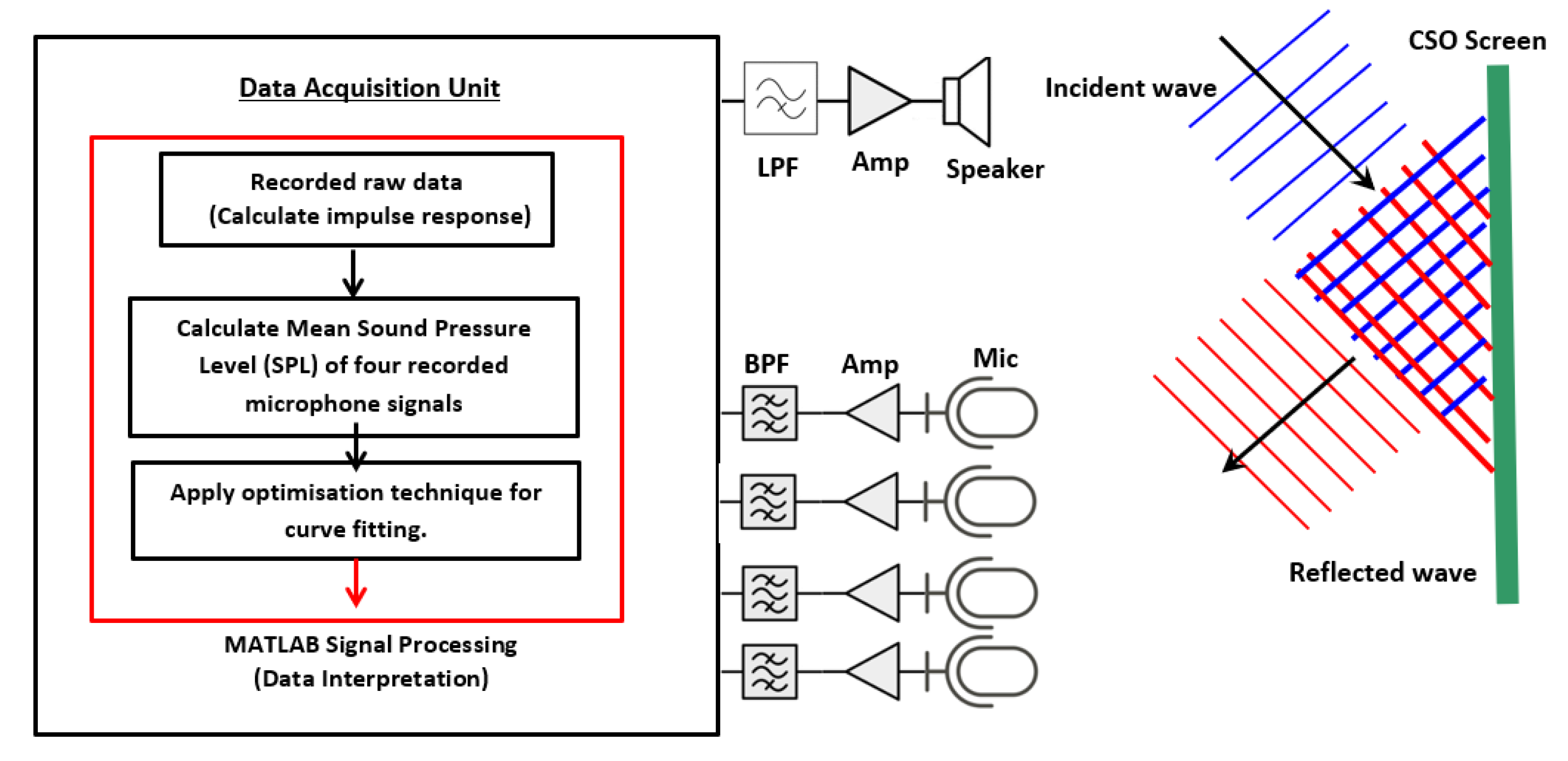



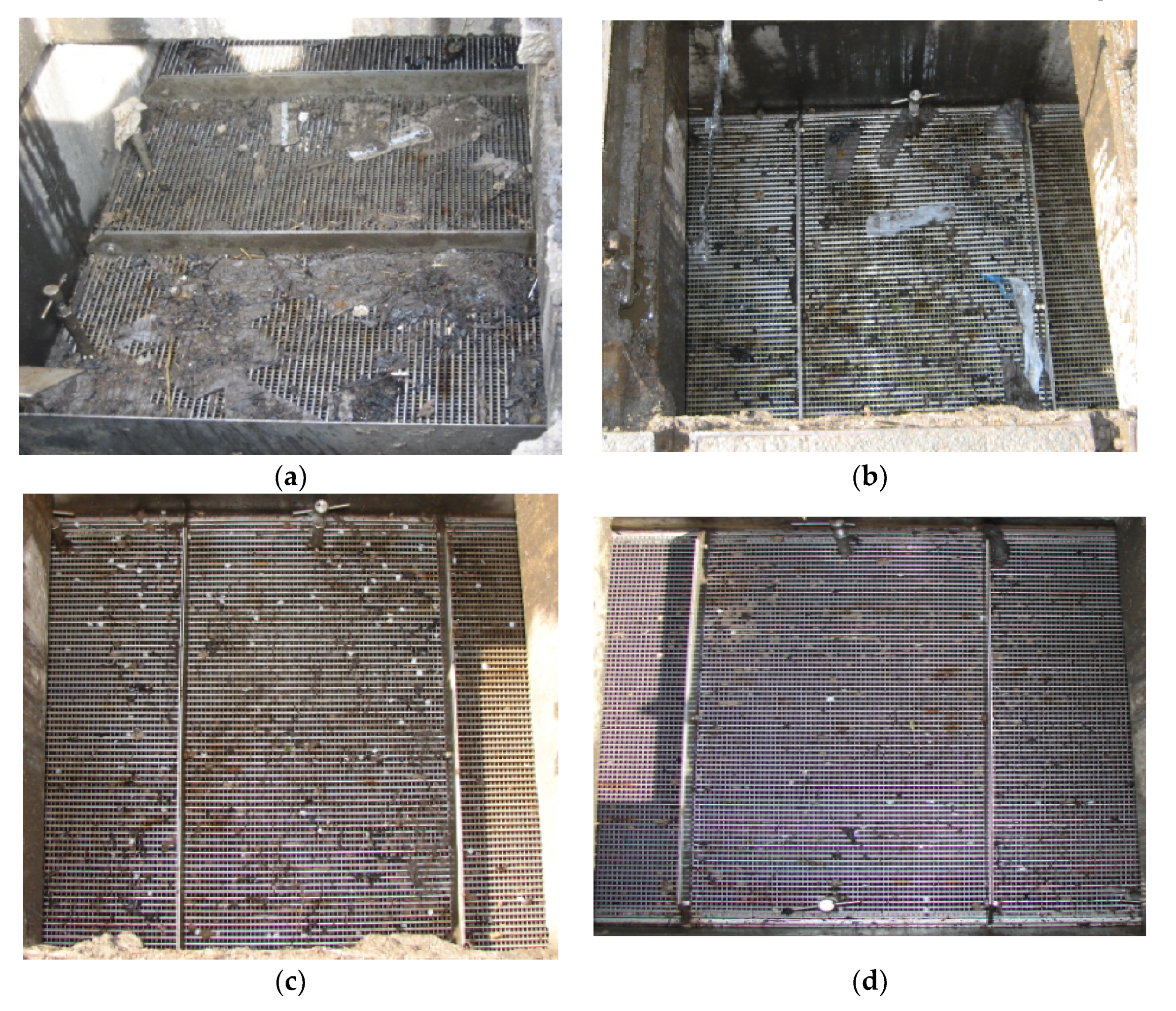

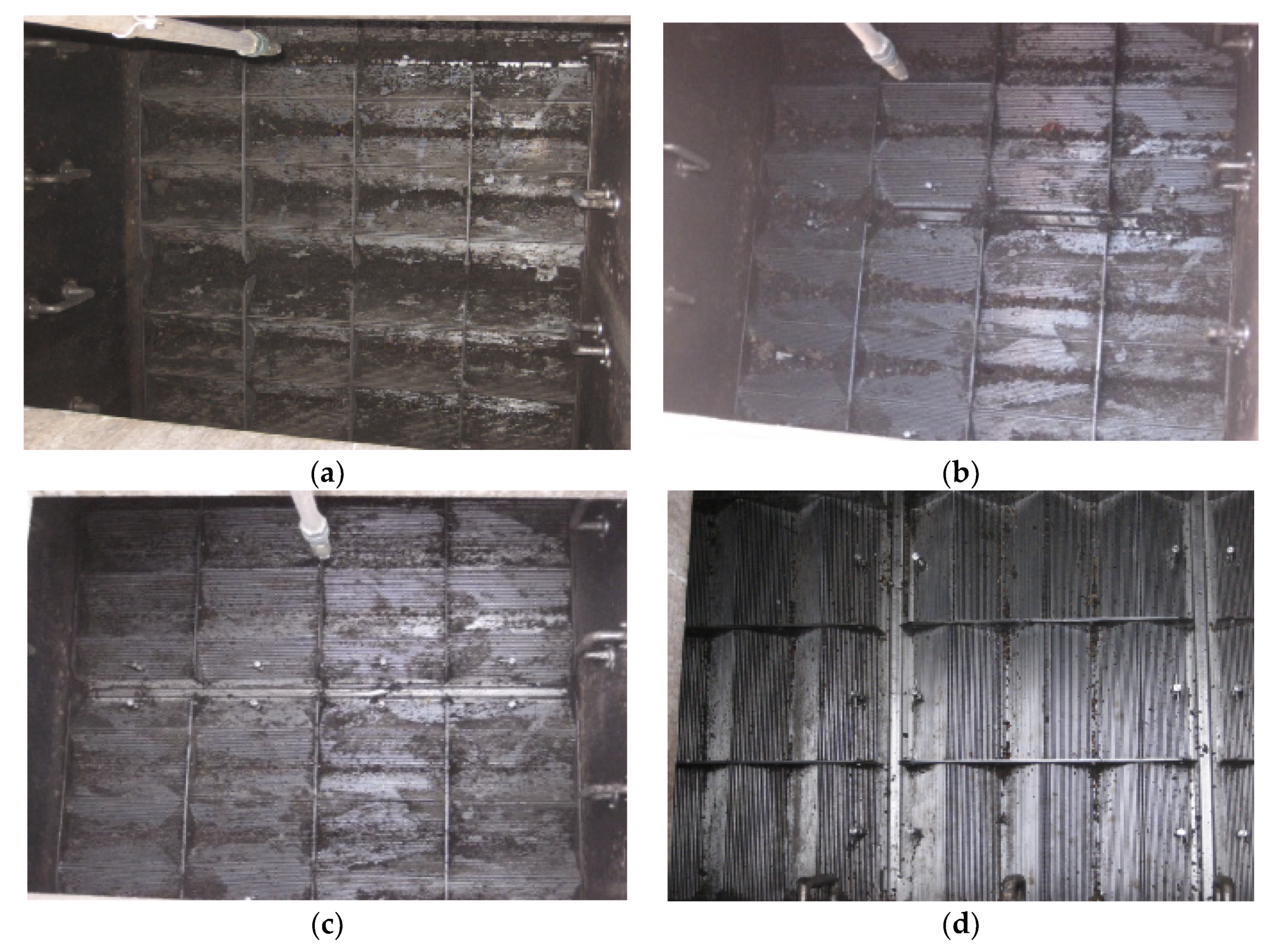

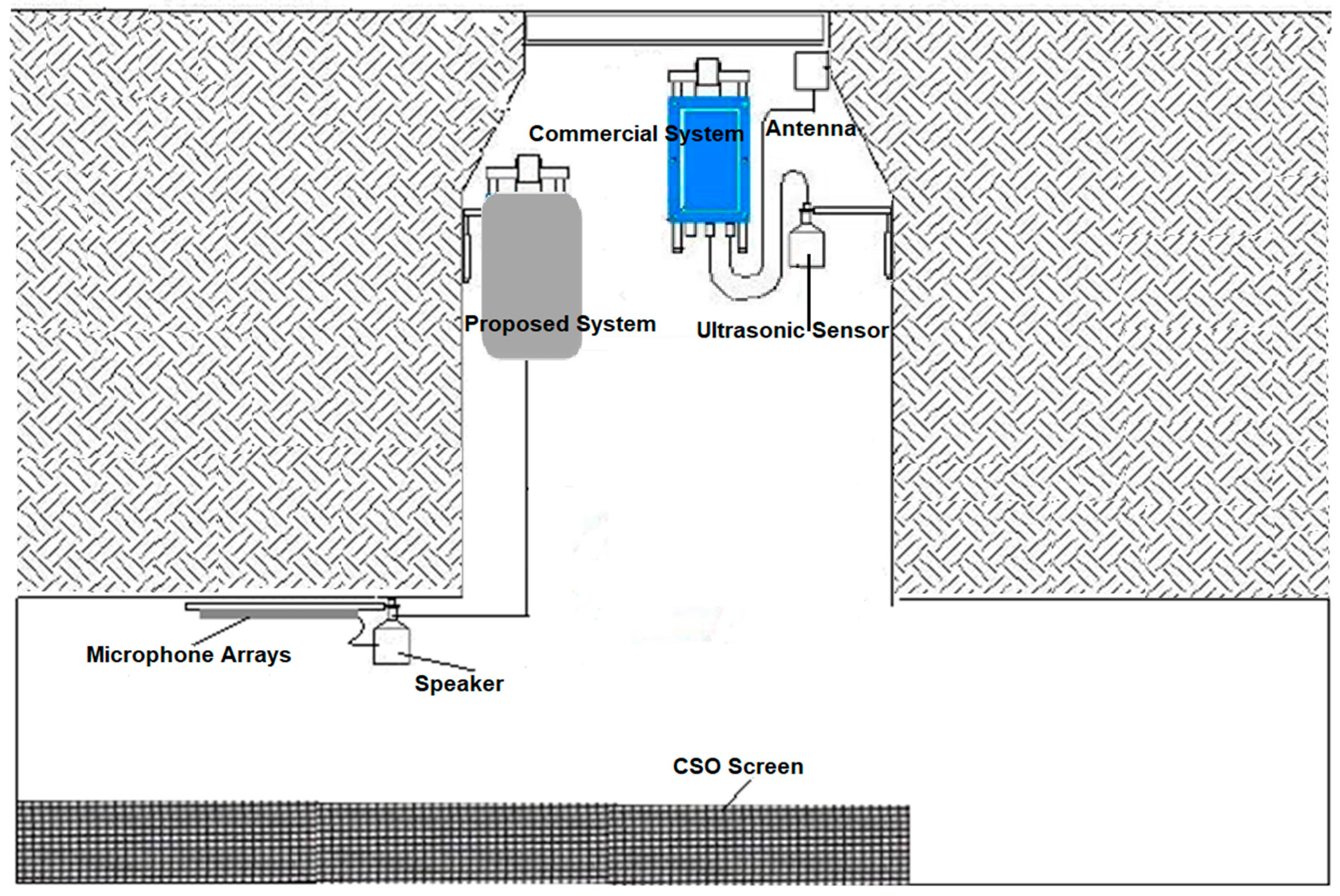
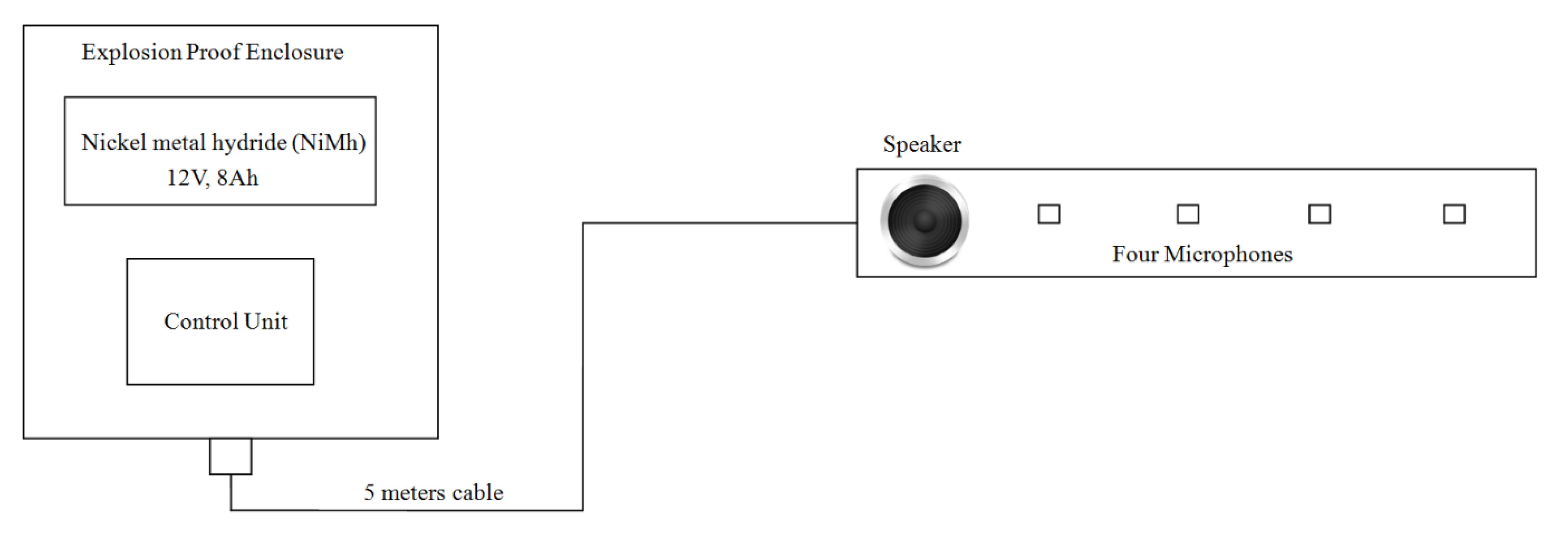


Publisher’s Note: MDPI stays neutral with regard to jurisdictional claims in published maps and institutional affiliations. |
© 2021 by the authors. Licensee MDPI, Basel, Switzerland. This article is an open access article distributed under the terms and conditions of the Creative Commons Attribution (CC BY) license (http://creativecommons.org/licenses/by/4.0/).
Share and Cite
See, C.H.; Horoshenkov, K.V.; Ali, M.T.B.; Tait, S.J. An Acoustic Sensor for Combined Sewer Overflow (CSO) Screen Condition Monitoring in a Drainage Infrastructure. Sensors 2021, 21, 404. https://doi.org/10.3390/s21020404
See CH, Horoshenkov KV, Ali MTB, Tait SJ. An Acoustic Sensor for Combined Sewer Overflow (CSO) Screen Condition Monitoring in a Drainage Infrastructure. Sensors. 2021; 21(2):404. https://doi.org/10.3390/s21020404
Chicago/Turabian StyleSee, Chan H., Kirill V. Horoshenkov, M. Tareq Bin Ali, and Simon J. Tait. 2021. "An Acoustic Sensor for Combined Sewer Overflow (CSO) Screen Condition Monitoring in a Drainage Infrastructure" Sensors 21, no. 2: 404. https://doi.org/10.3390/s21020404




